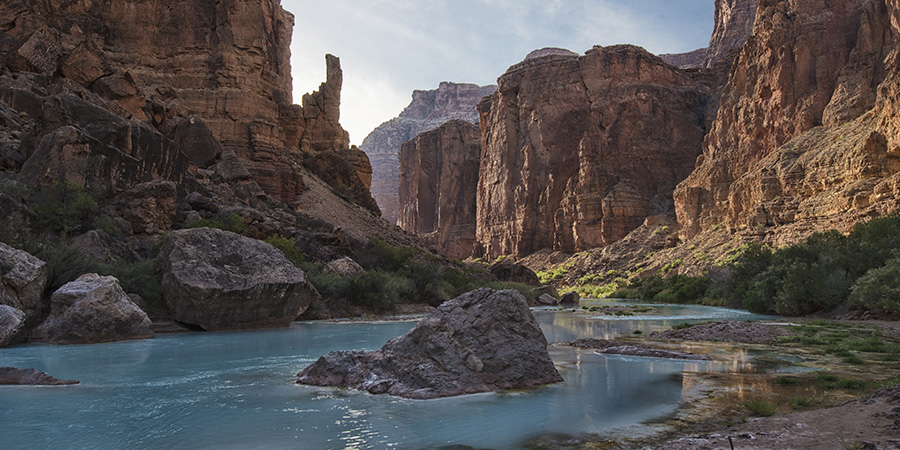
An alarming new rule would undermine tribal sovereignty, allowing developers to get permits for hydropower projects on tribal lands over a tribe’s objection.
Can tribes put an early stop to hydropower projects on their own lands?
Under a new rule recommended by the secretary of energy the answer would be: No.
In an alarming move, on October 23, 2025, Secretary of Energy Chris Wright proposed that the Federal Energy Regulatory Commission (FERC) create a new regulation. The new rule would prevent FERC from denying preliminary permits for hydropower projects based on the objection of the tribe on whose land the project would be built.
On October 27, 2025, FERC quietly opened a public comment period on the idea. There’s a short window to submit a comment; the deadline is November 12, 2025.
This proposed rule flies in the face of tribal sovereignty and the modern best practice for developers to work with a host tribe on projects proposed on the tribe’s land. The Inter Tribal Association of Arizona, which represents 21 tribal nations, called the proposed rule “an affront to the basic tenets of Tribal sovereignty.”
It’s also plain wrong. Just as you might not want a developer to work up plans to build a dam on your private property without your permission, tribes should have a right to say no to any hydropower permits issued on their lands.
Do tribes currently have a say in early permits for hydropower projects on their own lands?
Yes. In February 2024, FERC announced that it would not issue preliminary permits for hydropower projects on tribal lands when the tribe opposes the permit. These permits give their applicant first dibs to develop a designated area while investigating and preparing complete project plans.
Based on its February 2024 ruling, FERC denied these permits for seven hydropower proposals on Navajo Nation lands. The Navajo Nation had opposed the permits because their applicants had not consulted with the Navajo Nation, had not sought the Navajo Nation’s consent to proceed, and had not acquired permits required by Navajo law. And the Navajo Nation repeatedly voiced its concern about the large amount of water the projects would require.
What happened with the dams proposed near the Grand Canyon?

After hearing concerns from the Navajo Nation, in April 2024 FERC denied the permit for the controversial Big Canyon Dam, which would have dammed Big Canyon, a tributary canyon to the Little Colorado River Gorge, on Navajo Nation land mere miles from Grand Canyon National Park.
Many tribes opposed the Big Canyon Dam, not far from the confluence of the Little Colorado River and the Colorado River inside the Grand Canyon, because it would have placed cultural sites and sacred sites at risk. Many tribes maintain strong cultural connections to the area to this day. If the secretary of energy’s proposed rule moves ahead, projects like this could potentially reemerge and move ahead.
Save the Confluence, a grassroots group of Navajo families, also strongly opposed the dam. Save the Confluence previously fought off the Escalade tramway resort, which had been proposed not far from the Big Canyon Dam site.
How long do tribes and the public have to comment?
Sixteen days. This is a much shorter comment period than usual.
In 2024, when FERC announced that it was reviewing the Big Canyon Dam project, in light of the agency opened a 30-day comment period.
The current comment period to essentially undo FERC’s 2024 tribal-objection ruling is a meager 16 days. This is frankly too short a window for tribes and the public to meaningfully engage.
Won’t the new FERC rule create uncertainty for hydropower developers?
Yes. Under the proposed rule, a developer could secure a preliminary permit on tribal lands regardless of the tribe’s position. This gives the developer four years to apply for a 50-year hydropower license.
If a developer hasn’t worked with a tribe to address tribal concerns, why should that company be able to tie up a project site and a tribe’s resources for four years? It is much more efficient for the developer to work out concerns with a tribe before applying.
We know this to be true because companies right here in the Grand Canyon region have been following this process successfully since 2024. One example is a proposed hydropower project near Page, Arizona, where Rye Development is working with the Navajo Nation to advance a project on Navajo lands.
What can you do to help support tribal sovereignty?
This rule would be a huge step backward. It would undermine a tribe’s right to control how tribal lands and waters are used.
Please submit a comment today. Tell regulators you oppose the new rule put forth by the secretary of energy that would strip FERC of its ability to deny a permit on a tribe’s lands when the tribe opposes it, and that 16 days is too rushed to provide comments.
Prefer to comment directly?
Visit the FERC portal and enter docket number RM26-5, then share your comment.




